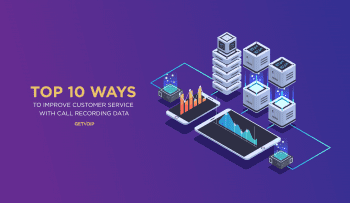Until recently, the ubiquity of “Big Data” has had limited relevance to the average consumer or small business. While cloud technology is driving some of the most exciting innovations in data analysis and machine learning, those applications were mostly aimed at enterprise-level analytics, with business intelligence and sophisticated marketing techniques which didn’t really resonate with the every day user. That is no longer the case. As the technology becomes more available and affordable, innovation is taking off like a rocket, and I’ve tracked down some of the most interesting applications out there right now. All of these products are dedicated to making life easier, better, smarter, and more streamlined, both in and out of the office.
1. Crowdflower – The Human Element of Machine Learning
On the surface you might think Crowdflower is the opposite of artificial intelligence. As a cloud-sourced labor platform, it assigns millions of common crowdsourcing tasks to a human worksource: tagging, sentiment analysis, or photo recognition, for example. But Crowdflower knows that its greatest growth area is in enabling the development of AI through “human-in-the-loop machine learning.” In fact, they just sponsored an expert report on how crowdsourced data can be plugged into an algorithm to make computers much, much smarter.
2. Immunet – Collective Immunity for Antivirus Protection
There are plenty of cloud antivirus programs out there, but Immunet has the best illustration of how collective intelligence drives effective security. Staying one step ahead of the bad guys has always been the challenge: simply responding to known threats isn’t enough when malware, viruses, and malicious software of all types get more sophisticated every day. An intelligent solution like Immunet lets antivirus protection evolve in real time, mutating along with hostile software. Every user’s data contributes to the counter-virus agility of the software, and every user benefits instantly.
3. Sift Science – Smart Fraud Detection
Stopping online fraud is not an easy task. The sophistication of thieves working behind the screen of the internet calls for extremely powerful, agile algorithms. Sift works in real time to constantly identify patterns on eCommerce sites: both the specific normal purchasing patterns of a specific site and fraud patterns across their whole customer base. They check more than 5000 signals to identify and flag potential fraud: everything from browsing history to the chance that a given address is automatically generated. Each transaction gets a “Sift Score” which tells retailers the likelihood of fraud and makes it easy to identify and monitor suspicious behavior at a glance. Sift is constantly learning: with more than 2 billion events analyzed to date, their dataset is strong and only getting stronger.
4. Petnet – Intelligent Pet Feeding
More than a fancy kibble bowl, the Petnet SmartFeeder is designed to give owners an in-depth view of how their pet is eating, and how to improve their diets. Using anonymously reported data to “aggregate the ideal pet-based data set “, its advanced algorithms can suggest the ideal food and a custom feeding schedule based on the age, weight, and description of your pet. It can report on the nutrition content and quality of the food, and intelligently recommend changes to your pet’s portion sizes or food brands over time. The SmartFeeder’s many sensors work in tandem with on-device and cloud-based intelligence. It interfaces with all of your devices, allowing remote food dispensing. It will notify you when food supplies are low, and automatically order more for delivery.
5. Doorsteps Swipe – Online Matchmaking for Homebuyers and Renters
It’s been called “the Tinder of Real Estate.” The Doorsteps Swipe app for iPhone shows users a single photo of a real estate listing, and asks them to give it thumbs up or down. Users can also opt to learn more information about a property, such as school zoning and pet policies. Swipe’s database is updated about every 15 minutes by direct feeds of listings which come from over 800 multiple listing services, partnerships with property management firms and third-party data providers like Zumper. Over time, it learns preferences, and begins to intelligently select a customized set of listings to show each user. By narrowing in on the ideal home, it streamlines the search process and improves outcomes for everyone.
6. Modernizing Medicine – Intelligent Healthcare Resource
This “Electronic Medical Assistant” helps doctors make better treatment decisions. It handles a lot of the behind-the-scenes functions such as scheduling, charting, billing, and more. But its most impressive capabilities have to do with the treatment insights it pulls from its enormous data sets of patient outcomes. With more than 14 million patient visits in its database, and backed by the computing intelligence of IBM’s Watson, Modernizing Medicine can make suggestions and comparisons or flag potential conflicts with a medication and a patient’s genetic profile. It’s still early days for the technology, but it marks the beginning of a watershed moment in cloud-based healthcare technology.
7. Flyr – Predicting Airfare Price Fluctuations
In spite of the proliferation of airfare comparison services out there, one serious problem continues to plague travelers: when do you book for the lowest price? It’s always a gamble. Either you research, take your time, and end up missing a great fare, or you commit too early and end up locked into overpaying for your flight. Flyr has designed an intelligent API which mines enormous cloud-based datasets to predict whether a given flight is likely to go up, go down, or stay the same. Their adaptive algorithms use billions of data points to get better over time, and ultimately save you more money.
8. Wallet.AI – Getting Smarter About Money
Previous budgeting apps like Mint have capitalized on AI to help with tasks like categorizing expenses, but none have ever had this immediacy. You give Wallet.AI permission to access the contextual data you leave behind you during the day: things like location, transaction history, and social networks. It monitors and reports on the dozens of tiny financial decisions you make every day, learns your habits, and offers advice and projections exactly when you are most likely to need them. For example, if you walk into the Gap but have already gone over your clothing budget for the month, it might have something to say about that. If buying lattes every morning this week means you might not make rent, it could warn you ahead of time. It’s only in prototype at the moment, but Wallet.AI is set to be a big deal in personal finance.
9. RealizeIt – Online Learning that Learns With You
Online courses have been around in one form or another since the beginning of the internet. The rise of the cloud drastically improved the availability and performance of internet-based learning, with Massively Open Online Courses from Ivy League universities becoming available to anyone, anywhere, any time. RealizeIt takes this revolution evolution a step further, with a platform which learns along with the students. It collects and analyzes data on learning behaviors, content engagement, and curriculum effectiveness, which powers the platform’s adaptive system evolution, allowing it to continuously personalize and improve the experience for each student.
10. Skype Translator – Fluency in Real Time
It’s only in previews, but Skype’s translation service brings together two serious machine-learning disciplines: voice recognition and translation. As you speak, the translator creates a transcript of your conversation, instantly translating it and playing it back to the other party and vice versa. (At the moment you can only choose from a generic male or female voice, but plans are underway to introduce live translations in your own voice.) This is a huge achievement in computer science, and while it has its hiccups, it is getting smarter with every conversation. Currently the beta service is available in Spanish/English, but dozens of languages will be supported in further releases.
Of course, some of the biggest players in the cloud-based artificial intelligence arena are the obvious ones. Google’s search algorithm is arguably the most influential use of this technology in the public sector. The company now uses cloud-based machine learning to improve every aspect of users’ online experience: The routes for Google’s famous driverless car rely on information it learns from the thousands of destinations that people type into Google Maps every day. Even Google’s anti-spam methods are directly linked to crowd-sourced cloud AI:
“Every time our CAPTCHAs are solved, that human effort helps digitize text, annotate images, and build machine learning datasets. This in turn helps preserve books, improve maps, and solve hard AI problems.”
~ Google reCAPTCHA
Apple’s Siri and all the other “virtual assistants” on the market are powered by cloud-based machine learning: every time someone makes a request, Siri learns a little more and becomes a little better at answering questions for everyone. Amazon’s intelligent algorithms are also hard at work helping you decide which Kindle books belong in your reading list and which household products you’re most likely to buy. Every one of Amazon’s millions of transactions make the program smarter and more accurate, which is why the recommendations can often be spookily on target. In fact, the unsettling (if convenient) trend of the “personalized experience” on the internet is largely driven by advances in crowd-and-cloud powered artificial intelligence. Companies like EngageClick use machine learning to serve up super-relevant advertisements wherever you go.
Microsoft has recently made huge waves in the industry. In spite of the very public feats of Watson, the company was thought to be somewhat lagging behind in the AI race with Google. Just last week, however, Microsoft launched the cloud-based Azure Machine Learning Platform. This technology will open up whole new worlds for developers, bringing even more cloud-sourced intelligence innovations to market in the very near future. The marriage of the cloud and AI is the bleeding edge of today’s technology, and the proliferation of intelligent products is just beginning.
[Image via Shutterstock]







